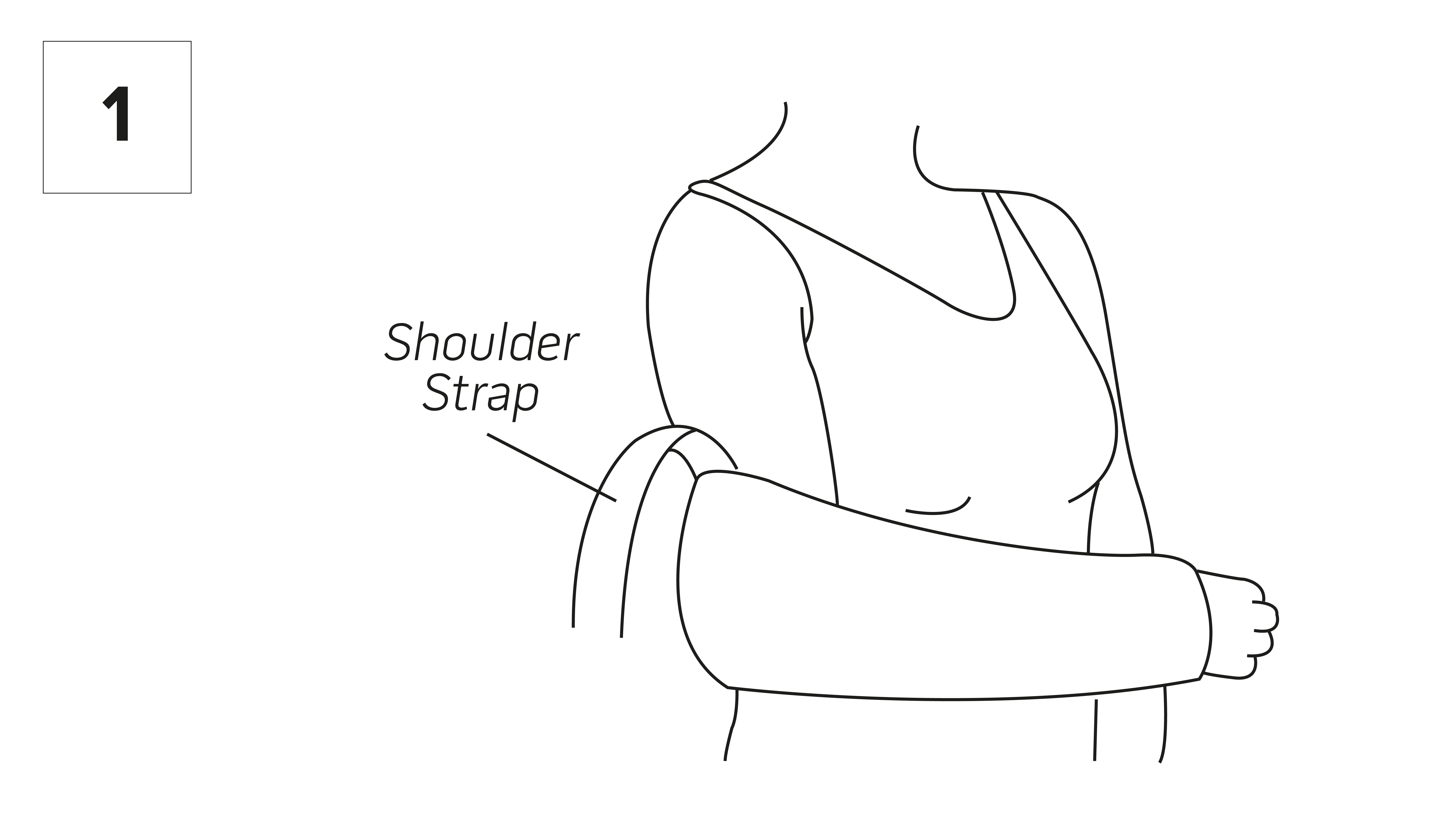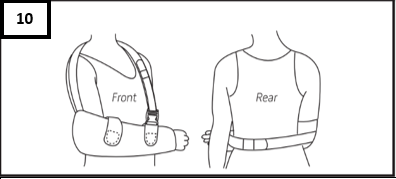
Managing daily activities after shoulder surgery
Following surgery your shoulder will be immobilised in a sling to support your joint. A Healthcare professional will demonstrate and practice the removal and application of the sling to ensure you will manage on discharge. You are required to wear your sling day and night, removing it only to complete your exercises and personal care – unless informed otherwise.
Managing your personal care after shoulder surgery
Whilst you are required to wear your shoulder sling we recommend that you strip wash, to reduce the risk of injury/falls. Wear loose fitting clothing e.g. t-shirts, shirts or blouse to make it easier to get dressed. Avoid straps being placed over your wound.
Wearing elasticated trousers/ skirts/jogging bottoms will make it easier to dress/undress your lower body. Wear slip-on footwear with backs and avoid laces.
Washing and dressing technique
To undress: remove your shoulder immobiliser; undress your non-operated arm first, then pull the garment over your head gently. This will enable you to slide clothing over your operated arm resulting in no movement from your shoulder joint.
Use a flannel or wet wipe (non-perfumed) to gently wash under your operated armpit. You must avoid actively moving your shoulder to gain access.
HELPFUL TIP: If you bend forward gently you will notice gravity assists in opening up the space of your armpit to enable you to wash/dry more easily.
To dress: always dress your operated arm first. Slide your clothing gently past your elbow, then up to your shoulder. Then pull the clothing over your head. Finally feed your non -operated arm through. Once you have your clothing on, immediately re-apply your shoulder immobiliser to support your shoulder joint in position.
Domestic Activities
Whilst your shoulder is immobilised, you should only use your non-operated arm for everyday activities such as feeding, meal preparation, snacks and making hot drinks. No weight is to be placed through your operated arm.
We recommend that you have ready meals or easy-to-prepare meals whilst you are recovering from your surgery. You may wish to consider purchasing one-handed assistive aids to increase your independence during kitchen tasks (e.g. one-handed cutlery, plate guard, one-handed jar opener, non-slip mat, travel kettle).
You may require support with shopping initially on discharge due to no heaving lifting; consider family/friend support, Age UK or online shopping.
Transferring on/off bed, chair and toilet
No weight must be placed through your operated shoulder whilst getting on/off furniture.
More information
If you have any concerns or questions in relation to managing at home, please do not hesitate to contact The Royal Orthopaedic Hospital Therapy services, Mon – Fri, 8am - 4pm on 0121 812 3500. Please ask to speak to an Occupational Therapist.
Sling Fitting Guide for Promedics LSS/10 Lancaster Shoulder Sling
If you have provided a sling following to wear your operation this will have already been adjusted to your needs and you will have been advised the length of time you will need to use your sling for.
 |
Place arm in sling and ensure the elbow is held securely in place. |
 |
Close the upper part of sling by attaching the closure strap (with no buckles on it) mid-way between wrist and elbow crease. |
 |
Attach the strap with the buckles on it, slightly above wrist as shown. Ensure buckle A is positioned at the back, facing the body. Ensure buckle B is at the top, facing upwards. |
 |
Take the shoulder strap up across the back. |
 |
Place the strap over the shoulder opposite the operated/injured arm. |
 |
Fasten buckle B. Adjust the strap and secure with the hook/loop fastening. |
 |
Take the body strap and attach it to the front of the arm sling as shown, using hook/loop fastening. |
 |
Bring the body strap around the back of the waist. |
 |
Fasten buckle A. Adjust the strap and secure with the hook/ loop fastening. |
 |
Front and rear view of the completed shoulder sling fitting. |